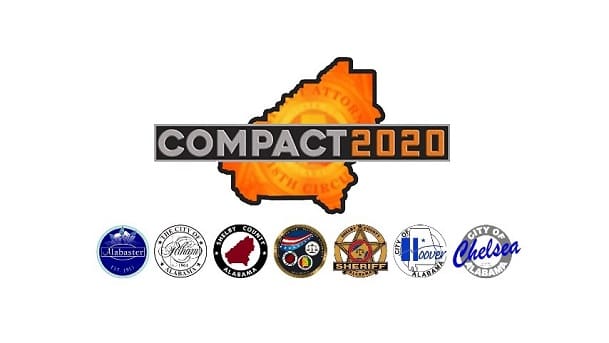
In Shelby County, Alabama, the COMPACT 2020 coalition takes a holistic approach to substance use and misuse prevention: parental resources, the Strategic Prevention Framework (SPF), and evidence-based youth curriculum.
“Shelby County, Alabama is listed as one of the fastest growing counties in Alabama. Many county leaders realized the drug epidemic in their communities was outpacing the county’s prevention capabilities,” said Ashley Crumpton, Deputy Director of COMPACT 2020. “Jill Lee, the District Attorney for Shelby County, approached the Shelby County Commission with an innovative prevention vision – now known as COMPACT 2020.”
The coalition partners with city mayors, city council presidents, police chiefs, the Sheriff’s Office, and the Drug Enforcement Task Force, along with fellow community leaders. Mobilized in 2016, Shelby County has a population of just over 200,000 and covers over 800 square miles. Recently, the coalition noted that their main prevention focus needs to be directed to adolescents, as early as 6th grade.
The coalition began a three-pronged approach; first, addressing parental resources. “COMPACT 2020 is a unique partnership working directly with the drug task force, city officials, law enforcement and local school leaders. Agencies that have not been able to communicate directly with each other now have a central hub to send information for validation and action,” said Crumpton. If COMPACT 2020 validates drug use information about an at-risk juvenile, then a phone call is placed directly to the parents or guardian, giving parents the opportunity to address the issue before traditional law enforcement gets involved.
Second, to integrate the Strategic Prevention Framework (SPF) learned at the 2017 National Coalition Academy in Birmingham, Alabama, the coalition developed four individual prevention teams in four cities, with a fifth joining in early 2018.
Third, COMPACT 2020 partnered with all four Shelby County school systems to implement an evidence-based life-skills curriculum. The 6th grade curriculum will be implemented during the 2017 – 2018 school year, with plans to grow until all levels are in place.
“The Strategic Prevention Framework is a successful model for coalitions to follow. It is crucial to engage the community at the lowest level possible (towns/cities/communities). It is not feasible to do prevention work to address local conditions if your target population is too large,” Crumpton advises fellow coalitions. “Community members must be engaged and guiding the entire SPF process to be certain that the coalition is addressing the local conditions for each community. By truly engaging stakeholders at this level, you build the capacity needed to implement the strategies through volunteerism.”

